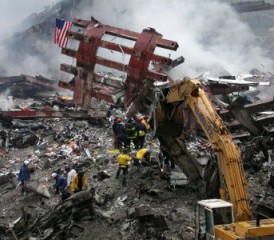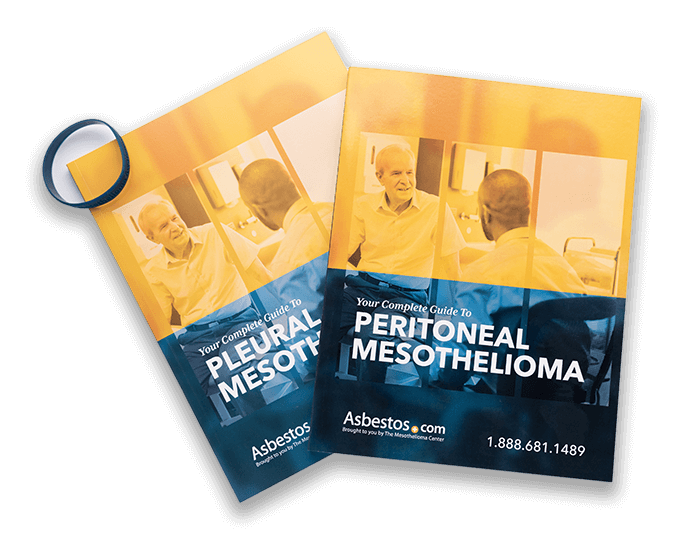Flores: State of Cancer in 9/11 First Responders and Survivors
Awareness & ResearchWritten by Dr. Raja Michael Flores | Edited By Walter Pacheco

This Sept. 11 marks 19 years since the terrorist attacks on the World Trade Center in my hometown of New York City. Nearly 3,000 people died that day, but many more have since suffered and died from exposure to asbestos and other toxic materials.
Toxins were released in massive amounts when the World Trade Center fell. The rubble left an estimated 410,000 to 525,000 people exposed to myriad carcinogens in the air. These toxins caused first responders and survivors to develop respiratory diseases and cancers that would haunt them decades later.
These men and women risked their lives to save thousands of people in the days and weeks after the attack. The rescue teams and some heroic civilians kept returning to the rubble, looking for ways to save more people. They felt that every minute wasted could’ve been another victim’s last breath.
Since 2001, the residual damage from the World Trade Center attacks has claimed thousands of lives and debilitated even more. Lung cancer, mesothelioma and leukemia are just some of the many cancers covered by the World Trade Center Health Program, which provides medical treatment and monitoring for first responders affected by the devastation.
As we approach two decades removed from the tragedy, a new pattern of medical issues may begin to emerge. The latency period of asbestos-related disease is typically 20 to 60 years, and within the next decade I expect a substantial increase in the number of 9/11-linked mesothelioma cases.
Unnecessary Exposure to 9/11 Dust Caused Decades of Disease
The unfortunate truth is that proper communication and safety measures could have spared the lives of many first responders and survivors. Since 9/11, more than 2,500 first responders have died and over 10,000 people have a 9/11-related cancer diagnosis.
At the time, police officers and firefighters who were on the scene believed the air quality to be safe. One such person was New York Police Department Detective Luiz Alvarez, an advocate of the 9/11 Victim Compensation Fund, who died from esophageal cancer in July.
As selfless as these men and women were, there should have been more available information on the risks of asbestos dust. They should have also had access to better safety gear to prevent permanent respiratory damage. At the time, the sense of desperation to save the maximum number of human lives was all-consuming.
Since the start of the COVID-19 pandemic, people have become aware of the importance of respiratory disease prevention. Personal protective equipment, such as N95 respirator masks, has become more critical to health care workers and first responders than at any other time in recent history.
I firmly believe the experience we have now from the COVID-19 pandemic would have saved thousands of first responders from death at the hands of preventable cancers. Proper masks would have been available for those working in the rubble, and the public would be more aware of the risks of respiratory illness.
The sadness of watching these heroes die from diseases that slowly torture and kill can be almost unbearable. First responders and survivors are developing cancers and illnesses as a result of the 9/11 attacks that can utterly destroy someone’s quality of life.
Almost 70% of recovery personnel have suffered lung and respiratory issues from the World Trade Center collapse. Looking to the future, however, I think there’s an opportunity to transform medical care for these patients.
New Mesothelioma Treatments and Prevention Impact Future Victims
After years of treating police officers and first responders affected by 9/11, I’ve noticed an opportunity to transform the landscape of medical care for these patients. As we get closer to 25 years and beyond from the tragedy, I anticipate a new trend in cases and disease presentation.
I expect the number of mesothelioma cases associated with 9/11 to rise in the next five to 10 years. The latency period for this disease is about 20 to 60 years before the first symptoms occur. While the number of mesothelioma 9/11 cases has been few so far, it’s only a matter of time before these cases develop.
I’m privileged to be able to spend time with these patients and help them find hope in new and developing treatment options. At Mount Sinai, my team and I are working on new methods of delivering immunotherapy that could improve survival and benefit those with a poor prognosis.
We’ve also worked to establish pleurectomy and decortication as the standard surgical procedure for mesothelioma patients, an operation that preserves the quality of life and extends survival.
The best advice for this population is to take preventative screening measures as early as possible. For many of the 9/11 workers who were exposed, I order annual low-dose CAT scans along with physical examinations to detect abnormalities at the earliest appearance.
Prevention will have the most significant impact on mesothelioma cases. The importance of spreading awareness of asbestos risk and exposure to toxic dust cannot be understated. The heroes from that tragic day do not deserve the fate of deadly cancer.
I like to keep an open mind, and my team and I will continue to explore the benefits of immunotherapy and other emerging treatments.
As we work toward a complete asbestos ban in this country, I hope never to see another tragedy in my life with such devastating and long-lasting ramifications.




